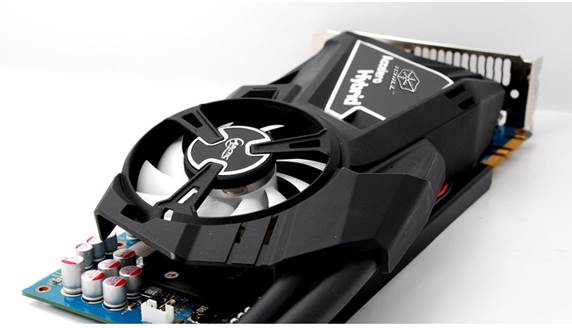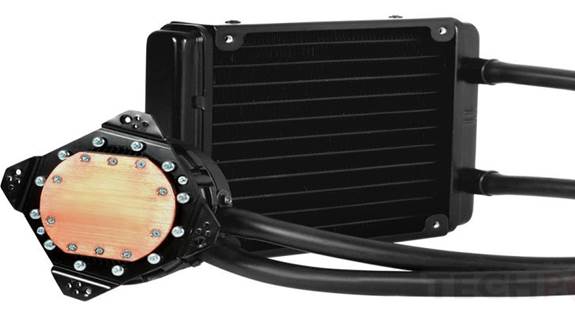A sweet DIY project for hardcore
cooling freaks
back in the olden days of, like, three
years ago, GPUs were quite loud and didn't cool very well, so aftermarket
coolers were not necessarily required but were a good idea, and absolutely
necessary if you wanted to heavily overclock the card.

Arctic
Cooling Accelero Hybrid GTX 680
Even if you didn't want to overclock but
were a hardcore builder, installing liquid coolers made for a fun weekend
project. Those days have mostly ended, now that Nvidia has gotten its act
together with regards to quiet, well-designed coolers (AMD is getting closer,
but isn’t quite there yet for the high-end cards), and modern GPUs overclock
quite nicely even with a stock cooler. But that hasn't stopped Arctic Cooling
from developing exotic aftermarket coolers for all of today's high-end GPUs
(Nvidia 600 and AMD 7000 series), so this month we strapped its Hybrid
water-and-air cooler to a GTX 680 to see what the fuss was all about. Even
though the cooler worked wonderfully, this is not a project for the final-of-hear
I, as it would be tough to undo, but the gains it achieved in noise and heat
dissipation were quite impressive.
The kit includes three separate pieces that
must all be joined together: the water block and radiator, the cooling shroud
with built-in fan, and the fan for the radiator. First, you must remove the
stock cooler from your GPU, then whip out the Accelero Hybrid's Ikea-like
step-by-step instructions, and start assembling the cooler. To do so, you glue
some heatsinks to your board's VRMs, then attach the water block to the shroud,
then attach the shroud to the card, then connect power for the fan and the
pump. Finally, you connect the included fan to the radiator and then attach the
radiator to your case’s exhaust port above the PCIe slots. Installs TICN took
us roughly one hour, though that doesn't count leaving the card overnight for the
thermal glue holding the heatsinks to dry. Overall, the instructions were easy
to follow, and we had zero issues in testing, too, so we feel that means the
instructions did their job, letting us install the cooler without breaking the
card.

The
kit includes three separate pieces that must all be joined together: the water
block and radiator, the cooling shroud with built-in fan, and the fan for the
radiator
Once we had it up and running, we were
astonished by the card's noise level, or better yet, the lack of noise. It's so
quiet that you could play Crysis 3 in a library, with your case door off. Even
when putting your ear next to the card under 100 percent load, you still don't
hear much except for the occasional gurgle of water moving through the tubes,
and we had the card overclocked to 1,100MHz from 1,006MHz. The temperatures
were also superb, hitting only 60 C under full load overclocked, compared to 85
C with the stock cooler at stock clocks. We can definitely say this cooler
works as advertised, runs silent and cool, and didn't break our GPU, nor was it
difficult to assemble.

Once
we had it up and running, we were astonished by the card's noise level, or
better yet, the lack of noise
Now, should you buy it? Well, the
performance gains we saw from overclocking the card were modest, as they always
are. Also, this cooler cost $110 on Newegg as we went to press, which is a
pretty penny to pay for an extra four frames per second in Crysis 3, for
example. It is quiet, though, and it certainly runs cool, so if you’re having
heat and/or noise issues, this is one cooling solution we can wholeheartedly
recommend. It definitely kicks ass.
Arctic Cooling Accelero Hybrid GTX 680
Pros
·
Totally silent
·
easy installation
·
great temps
·
fun DIY project
Cons
·
Small overclocking gains
·
kind of expensive
·
Price: $110
·
Website: www.arctic.ac
|